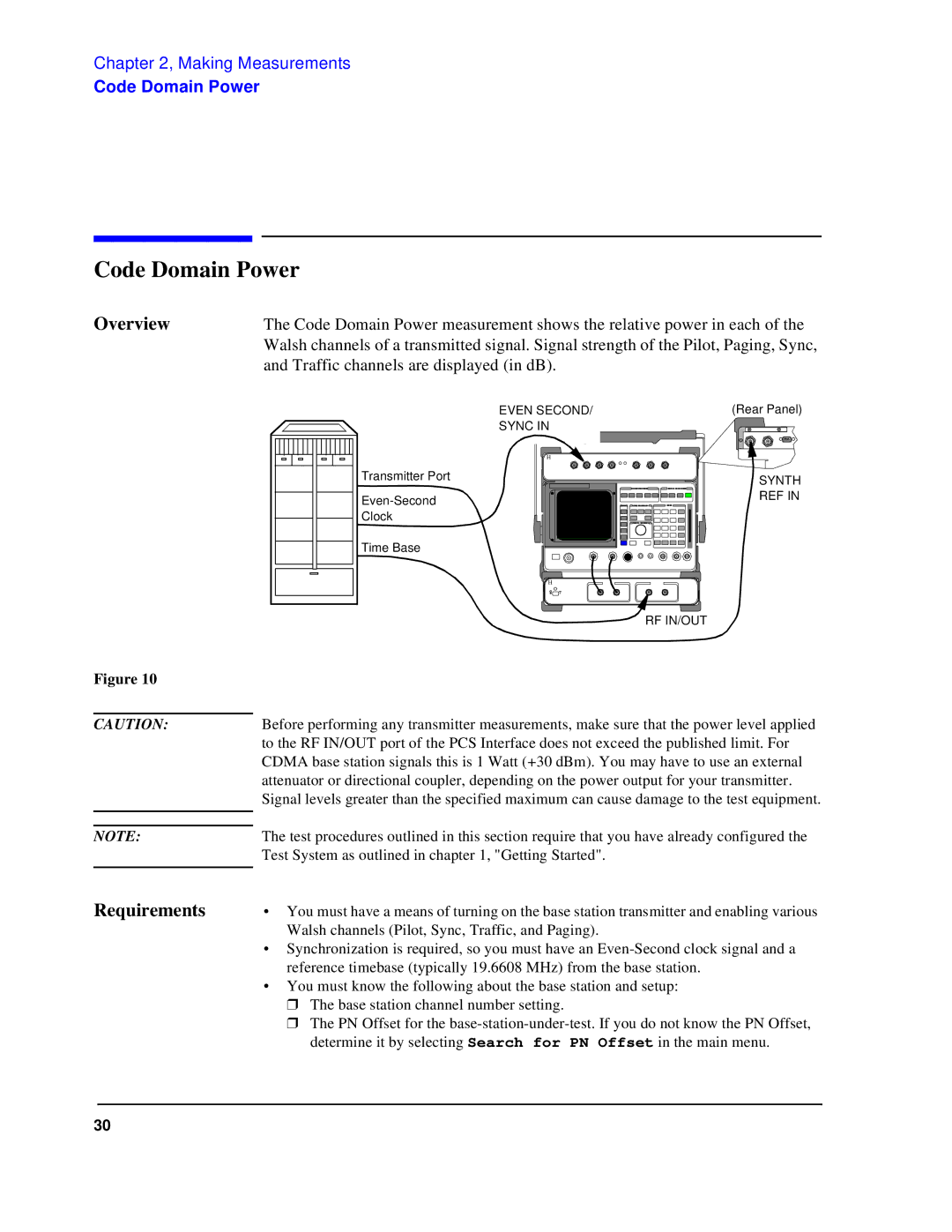
Chapter 2, Making Measurements
Code Domain Power
Code Domain Power
Overview | The Code Domain Power measurement shows the relative power in each of the |
| Walsh channels of a transmitted signal. Signal strength of the Pilot, Paging, Sync, |
| and Traffic channels are displayed (in dB). |
EVEN SECOND/
SYNC IN
H
Transmitter Port
Clock
(Rear Panel)
SYNTH
REF IN
Time Base
H
RF IN/OUT
Figure 10
CAUTION:
NOTE:
Requirements
Before performing any transmitter measurements, make sure that the power level applied to the RF IN/OUT port of the PCS Interface does not exceed the published limit. For CDMA base station signals this is 1 Watt (+30 dBm). You may have to use an external attenuator or directional coupler, depending on the power output for your transmitter. Signal levels greater than the specified maximum can cause damage to the test equipment.
The test procedures outlined in this section require that you have already configured the Test System as outlined in chapter 1, "Getting Started".
•You must have a means of turning on the base station transmitter and enabling various Walsh channels (Pilot, Sync, Traffic, and Paging).
•Synchronization is required, so you must have an
•You must know the following about the base station and setup:
❒The base station channel number setting.
❒The PN Offset for the
30
